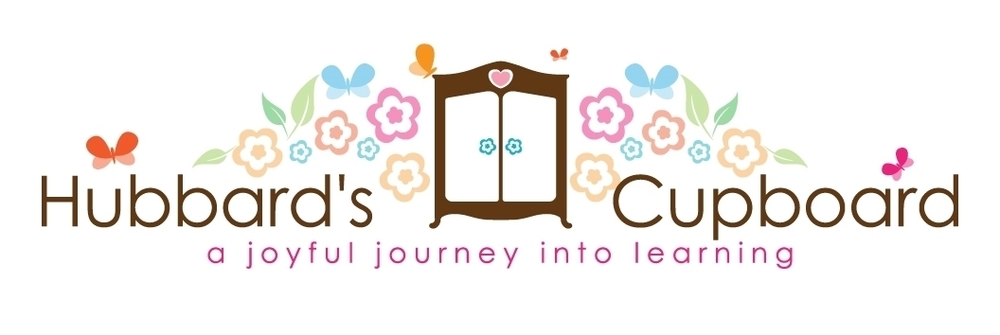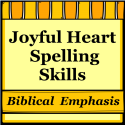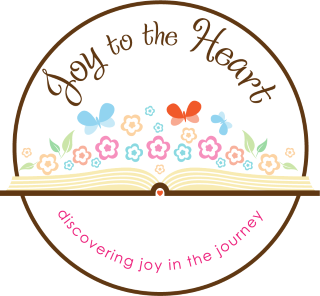Family Night
(Kindergarten Rhyme Time)
One evening during the school year, families are invited to return to school with their kindergartner to experience a special evening of games, food, crafts, and fun --with a focus on the joy of math, literacy, and learning as a family!
By participating in our Family Night, it is my hope that ...
- students will exhibit an increasing excitement in regards to the areas of math and literacy learning.
- students will see evidence of their families' support for their learning and school environment.
- families will experience the fun of learning alongside their child.
- families will develop a greater awareness of ways to assist their child in acquiring math and literacy skills.
- families will gain insight into the kindergarten level mathematics and literacy program.
Kindergarten Rhyme Time
Our second Family Math and Literacy Night centered around nursery rhymes that students had been learning in class.
Family Night Take Home Pack
Schedule
Activities
Printables
Additional Resources
Artwork & Words to Nursery Rhymes
Family Take Home Pack
Just as the previous year, each family in attendance received a folder containing directions for each activity set up during the evening of the Family Night, ideas for extensions at home, coordinating math/literacy skills and concepts taught within each activity, a nursery rhyme book, and a feedback form.
Family Night Schedule
• 6:30 Families begin to arrive, sign in, and pick up a Parent Pack
• Participate in nursery rhyme stations with your family!
• 7:55 - Winner of Cracker Jack estimation announced
Family Night Activities
Humpty Dumpty Stations
Egg Shell Rhymes
Why: To match pictures that rhyme; to practice hearing sounds that are alike at the end of words
How:
1) Choose one of the three sets of eggs to work with first.
2) Put the egg puzzles together by orally saying the name of each picture and matching the two pictures/words that rhyme. (Exp. Cat and Hat)
3) Once a match is made, see if your child can orally generate more words that rhyme with the two pictures.
4) Return all egg pieces to the correct bag when finished.
Jack Be Nimble Stations
Cracker Jack Estimation
Why: To develop beginning estimation
How:
1) Look at the jar containing Jack's Cracker Jacks. Each family may make 1 prediction as to how many Cracker Jacks are in this jar. Write your families' prediction (number guess and first and last name) and then place it in the can. (You may win a prize if your families' estimate was the closest!)
Jack Be Quick!
Why: To begin the development of the concept of time; to practice following verbal and pictorial directions; using fine and large motor skills
How:
1) Two family members pick up a pictorial task card that tells what each must do.
2) Discuss and predict whether the tasks will take the same amount of time, more time, or less time.
3) Do the task to check and see if you were right!
Old Mother Hubbard Stations
The 'Poor Dog' Puppet
Why: To increase fine motor skills; to practice orally retelling a poem
How:
1) Choose whether you want a black, gray, or brown dog and take one piece of corresponding construction paper.
2) Trace a dog head, chin, and two paw patterns onto your piece of construction paper. Then cut them out.
3) Use the smaller pieces of construction paper to add eyesand a nose to the dog head.
4) Cut out a red mouth and glue onto the chin.
5) Glue the dog head and chin/mouth onto a brown lunch sack.
6) Glue on the nursery rhyme to the back of your dog puppet.
7) Use the dog puppet to retell 'Old Mother Hubbard' to someone else!
Help Mother Hubbard
Why: To practice letter formation and letter/sound associations ; to encourage creativity by drawing/writing a variation to a known poem
How:
1) Read the poem 'Old Mother Hubbard.'
2) Choose one of the following…
- As a family, talk about what Mother Hubbard's problem is and figure out one way or one thing that she could do to solve her problem.
-Or create a new poem based on 'Old Mother Hubbard.' (For example, Old Mother Hubbard went to the cupboard to get her friend a snack but when she got there the cupboard was bare and so they went out to eat.)
3)Take one story starter sheet and help your child to stretch out the sounds of the words with you to try to write at least the beginning and ending letters they hear (like in our kid writing and writing notebooks) on the blank lines.
4) Make an illustration to go with your story.
Peas, Porridge, Hot Stations
How Many Peas in My Soup?
Why: To practice making sets of objects to correspond with numerals (4-10); to join sets of objects and count how many there are in all
How:
1) Choose what number you want to work with (4, 5, 6, 7, 8, 9, or 10) and count out that many beans.
2) Shake and roll the beans.
3) Count the red beans. Draw that many green peas on 1half of your bowl and write the numeral to show how many you have.
4) Count the white beans. Draw that many green peas on the 2ndhalf of your bowl and write the numeral to show how many you have.
5) Count how many you have all together. Draw that many green peas on the full bowl and write the numeral to show how many you have in all.
Peas, Bowls, Spoons
Why: To practice identifying, copying, and making AB, AAB, ABC, & ABB patterns
How:
(Note: There are three patterning activities at this station that progress in difficulty.)
1) Choose 1 pre-made pea, bowl, and/or spoon pattern strip. Place the exact same cutouts on top of the pattern strip. Can you continue with the same pattern off the edge of the strip? Recheck your pattern by going back to the beginning and pointing to each pea, bowl, or spoon. Either say the color or letters for the pattern!
2) Use just the laminated cut outs (of peas, bowls, and spoons) to layout and form your own pattern. Tell an adult what your pattern is or see if they can guess your pattern.
3) Use crayons and the bowl outline sheet to color and create your own pattern. Make sure to tell someone your pattern and check it!
Spider Stations
Create a Snack
Why: To practice following directions; to reinforce that print has meaning; to practice tracking print left to right
How:
(Note: Each person in your family may make a 'Create a Snack'.)
1) Take 1 napkin.
2) Using the spoons provided, place each of the following on your napkin…
2 Ritz crackers, 8 pretzels, 2 raisins
3) Use a knife to spread a thin layer of peanut butter onto one of your Ritz crackers.
4) Place the pretzel sticks on the edges of the cracker. These are your spider's legs!
5) Place the second cracker on top of the first cracker.
6) Spread two small dots of peanut butter on top of the second cracker.
7) To make your spider eyes, stick one raisin to each dot of peanut butter.
8) Eat and enjoy!
9) Throw all of your crumbs, napkins, etc. away before leaving for the next station = )
Bug Jar Math
Why: To make sets of objects to correspond with numerals (1-20); to use objects to add and subtract
How:
(Note: There are two different activities at this station.)
1) Choose a bug jar that has a numeral on the lid. Read the number out loud and then count that many bugs/insects into the jar.
2) Choose a bug jar without a numeral on the lid. Have an adult read a short story problem. (See below.) As the story is being read, place that many bugs in the jar. Listen carefully. You may need to add more bugs into the jar or take some bugs out of the jar based on what happens in the story. At the end of the story, you will need to count and tell the adult how many bugs are left in your jar.
- Today, Katie caught 4 spiders and 5 ladybugs. How many bugs did she catch today?
- Yesterday, Katie gave 3 bugs to each of her 4 friends. Count the total number of bugs she gave to her friends.
- Katie was playing queen of the ant hill with 7 ants. She accidentally stepped on 2 of the ants. How many ants did she have left?
- Katie hid 2 worms in her mom's purse and 3 snails under a blanket. How many hidden bugs did she have that may surprise her family later? (Don't try this at home!)
- Katie made a house for her bugs. She placed 3 bugs in the kitchen and 8 bugs in the living room. How many bugs did she place in the entire house?
- Katie had 6 grasshoppers. When she opened the jar to place more bugs inside, 3 grasshoppers jumped out! How many grasshoppers were left in the jar?
- Katie collected 5 caterpillars and placed them in a jar without a lid. After several days, she noticed that 3 had turned into butterflies and had flown away. How many caterpillars were still in the jar?
- Katie and her friends were looking for unusual bugs. They found 2 strange black bugs, 2 small orange bugs, and 1 worm. How many bugs in all did they find on their hunt?
Spider Count
Why: To match numerals to sets; to practice using one to one correspondence
How:
(Note: This game can be played with 2 or more people.)
1) On your turn, roll the die and then use a crayon to color in that many spiders on your spider web.
2) Play alternates between players.
3) The first person to fill their spider web with colored spiders wins!
Sheep Stations
ABC Sheep
Why: To reinforce letter recognition; to match upper and lower case letters; to practice identifying the letters at the beginning of pictures
How:
1) Choose one of the two sets of sheep and bags of wool to work with first.
2) Put the sheep puzzles together by matching the upper and lower case letters.
(A with a, B with b, etc.)
3) Look at the pictures on the bags of wool. What letter does each picture start with? Match each bag of wool to the correct letter sheep.
4) Return all sheep pieces and wool to the correct bag when finished.
Star Stations
Star Search
Why: To sort by color, size, and/or shape
How:
1) Start by looking at a few of the sample star mats. Why are the stars grouped as they are? What is the sorting rule? Can you find other stars that would belong in one of the groups?
2) Let one member of your family sort some of the stars into either one, two, or three alike groups. See if other family memberscan guess the sorting rule!
Pattern Block Stars
Why: To practice problem solving; to develop spatial sense, visual discrimination, and symmetry
How:
(Note: There are three related activities at this station.)
• Choose a star workmat. Use the pattern blocks provided to fill the inside space of the star. (Be careful! No blocks should be hanging over the edge and all spaces should be filled in!)
• or Choose a blank workmat and design your own star shape using the pattern blocks!
• or Choose a workmat which shows only half of a star. Can you use the pattern blocks to recreate the other side of the star?
Follow the Stars from Aa-Zz
Why: To reinforce letter recognition and ABC order; to practice identifying the letters and sounds heard at the beginning of words/pictures
How:
1) Point and say/sing the name of each letter of the alphabet on the clothesline.
2) Choose a picture. Orally say the name of the picture, listening carefully the sound at the beginning of the word. What letter makes that sound?
3) Clip the star to the correct letter clothespin.
4) When all the stars are 'up in the sky', ask an adult or older sibling to check it for you!
Various Rhyme Stations
Say a Rhyme/Graph a Rhyme
Why: To encourage oral language; graphing- to compare sets to see which has more or fewer items
How:
1) Sit on a carpet square.
2) Roll the nursery rhyme picture cube.
3) When the cube stops, chant the nursery rhyme together.
4) After saying all of the nursery rhymes, graph your favorite! Each person in your family needs to write their first and last name on a sticky note and place the sticky note on the graph to show which rhyme is their favorite.
5) Look at the graph. Discuss which nursery rhyme is liked more than the others, less than the others, and which ones are liked the same amount. You may want to check back later to see if the graph has changed.
Mix It/Fix It
Why: To sequence events in the correct order; to reinforce the use of position words such as first, next, last
How:
1) Choose one of the bags of nursery rhymes (poem and puzzles).
2) Read the poem together.
3) Look carefully at the separate portions of the nursery rhyme. Talk about the details that you see and what is happening in each picture.
4) Rearrange the pictures so that it follows the order of the nursery rhyme poem. Reread the nursery rhyme to check!
Family Photo
Why: To help us remember the fun we had at Kindergarten Rhyme Time!
How:
1) Gather your family around the Nursery Rhyme characters.
2) Ask the photographer to take your family photo.
3) Write the names of the family members who were in the photo with the nursery rhyme characters and leave this information with the photographer.
Printables for 'Kindergarten Rhyme Time' Family Night
(Designed by Hubbard's Cupboard)
These are slightly different than what is pictured above. The content is the same, but I created my own drawings so that I could share them with you! You will notice that I'm not an artist, but hopefully these will be of help as you plan your own 'Kindergarten Rhyme Time' Family Night!
Parent Pack
Sign In Sheet
Baa Baa Black Sheep Bags
Mother Hubbard Environmental Print Pictures
Mother Hubbard Writing Sheets
How Many Peas Recording Sheets
Stars for Sorting
(You will want to print the stars on various colors of paper.)
Feedback Form
Rhyme Time 'How To' Sheet - step by step directions for how to make each station!
Additional Resources
Links to More Nursery Rhyme Ideas
Our Nursery Rhyme Olympics!
Our Nursery Rhyme Artwork!
Mother Goose Rebus Rhymes -from Enchanted Learning
Rhyme a Week -lessons and printables for common nursery rhymes
Word Families in Nursery Rhymes
Nursery Rhyme Scavenger Hunt
Nursery Rhyme Ideas - great ideas for rhymes from Virtual Vine!
Nursery Rhyme/Word Family Resources
Teaching Language Arts through Nursery Rhymes by Amy DeCastro and Jennifer Kern. (Teacher Created Materials, 2001). ISBN 0-7439-3010-X
Teaching Math and Science through Nursery Rhymes by Amy DeCastro and Jennifer Kern. (Teacher Created Materials, 2000). ISBN 1-57690-654-X
Mother Goose Phonics by Deborah Schecter. (Scholastic, 1999). ISBN 0-439-12927-3
25 Mother Goose Peek-A-Boo Books by Helen Moore. (Scholastic, 1993). ISBN 0-590-49729-4
The Best of the Mailbox: Nursery Rhymes for Preschool/Kindergarten (The Education Center, 2000). ISBN 1-56234-340-8
Easy Lessons for Teaching Word Families by Judy Lynch. (Scholastic, 1998). ISBN 0-590-68570-8
Fun Phonics Manipulatives by Michelle Hancock, Sheryl Pate, and Jennie VanHaelst. (Scholastic, 1997). ISBN 0-590-31469-6
Word Families: 20 Interactive Mini-Books that Help Every Child Get a Great Start in Reading by Mary Beth Spann. (Scholastic, 1999). ISBN 0-439-10439-4
Introducing Word Families Through Literature by Jennifer Coldwell. (Carson-Dellosa, 1994). CD-0046
25 Read and Write Mini-Books that Teach Word Families by Nancy Sanders. (Scholastic, 2001). ISBN 0-439-15587-8
Pictograms: Graphing Pictures for a Reusable Classroom Grid by Laura Duncan Choate and JoAnn King Okey. (Dale Seymour Publications, 1989). ISBN 0-86651-487-2 (No, I know that this is not a nursery rhyme book, but a book with many pictures to use with graphs! This is where I was able to find a few good nursery rhyme character pictures!)
Hickory Dickory Math by Cecilia Dinio-Durkin (Scholastic, 1999) ISBN 0590065416
Rhymin' to the Beat: Volume 1 and 2 by Jack Hartman (Hop 2 It Music)




























